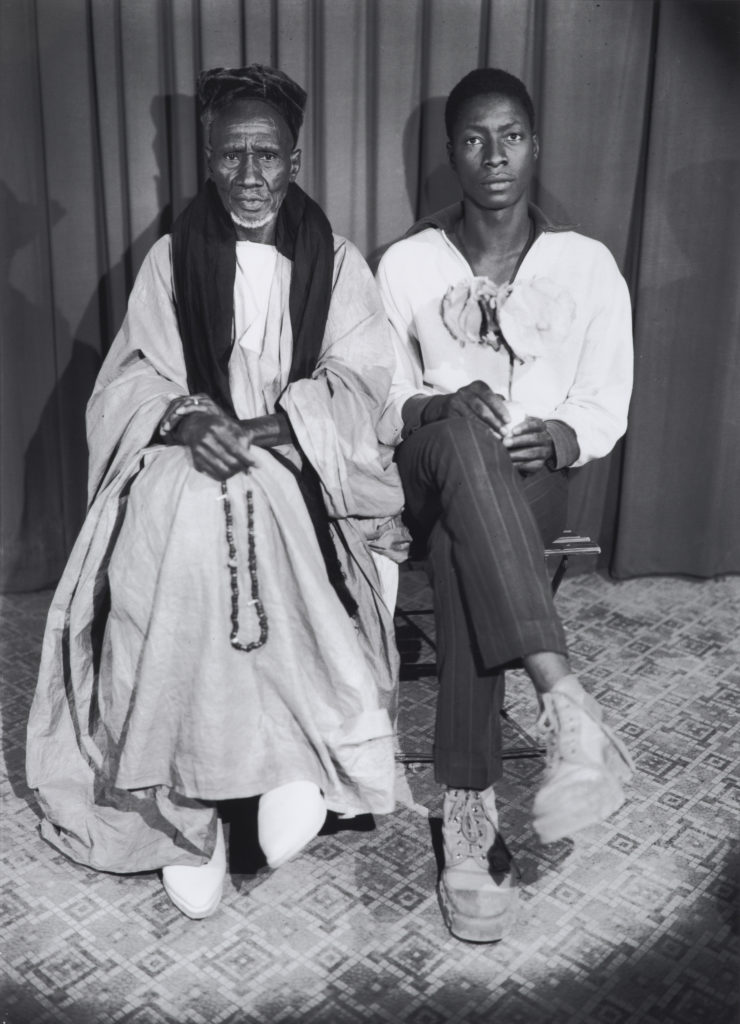Untitled #336 (work of art)
Información sobre la obra de arte
Ideas clave sobre esta obra de arte
- This black-and-white photograph features two Black men (most likely a father and his son) sitting side by side. Like many of Seydou Keïta’s photographs, this image shows the transition from tradition to modernity during the mid-20th century.
- Seydou Keïta was trained as a carpenter. He developed a passion for photography after his uncle gave him a camera in 1935.
- Untitled #336 was created using the gelatin-silver printing technique. Gelatin-silver printing is the most common process for making black-and-white photographs.
- Although Keïta was a self-taught photographer, he quickly rose to fame as a portrait artist and became the Malian government’s official photographer.
Más información
Artist Seydou Keïta was originally trained to be a carpenter. In the late 1940s, he set up a photography studio in his backyard in Bamako and began creating studio portraits. He opened his studio around the same time that his country gained independence from France. During this time many people moved from the Mali countryside to the capital city of Bamako. People in the city often commissioned portraits to send to their families who lived in the outlying areas.
Keïta’s photos document an emerging urban lifestyle. They show the changing ideals of beauty, success, and individual identity in the postcolonial era. Untitled #336 is most likely a portrait of a father and son. It shows the contrast between a father’s traditional style and his son’s modern style. The older man is wearing a boubou (a long, flowing garment worn in parts of Africa) and a traditional headdress. The younger man is wearing modern, slim-fitting pants and a loose, collared shirt.
Many of Keïta’s photographs were made using the gelatin-silver printing process. Gelatin-silver printing became the most popular process for creating black-and-white photos. The film used in this process is covered with a mixture of gelatin and silver halides. After it dries, the paper is exposed to light through a photo negative. The image is developed by placing the paper in chemicals that interact with the gelatin and silver.
Keïta was an entirely self-taught photographer who quickly became a successful portrait artist. He was eventually selected to be the official photographer for the Malian government. The artist’s legacy lives on through the Seydou Keïta foundation in Bamako. The foundation preserves Keïta’s work and supports young African artists.
“It’s easy to take a photo, but what really made a difference was that I always knew how to find the right position, and I never was wrong. Their head slightly turned, a serious face, the position of the hands… I was capable of making someone look really good. The photos were always very good. That’s why I always say that it’s a real art.”
-Seydou Keïta
Recursos adicionales
Recursos para los profesores:
- Visit the artist’s website to learn more about his life and work.
- Read an article about the history of portraiture.
- Watch a video about Keïta’s portraiture.
Recursos para los estudiantes:
- Watch a video about the gelatin-silver printing process.
- Watch a video of Keïta’s 2016 exhibition at the Grand Palais in Paris.
- Read an article to learn more about Keïta.

